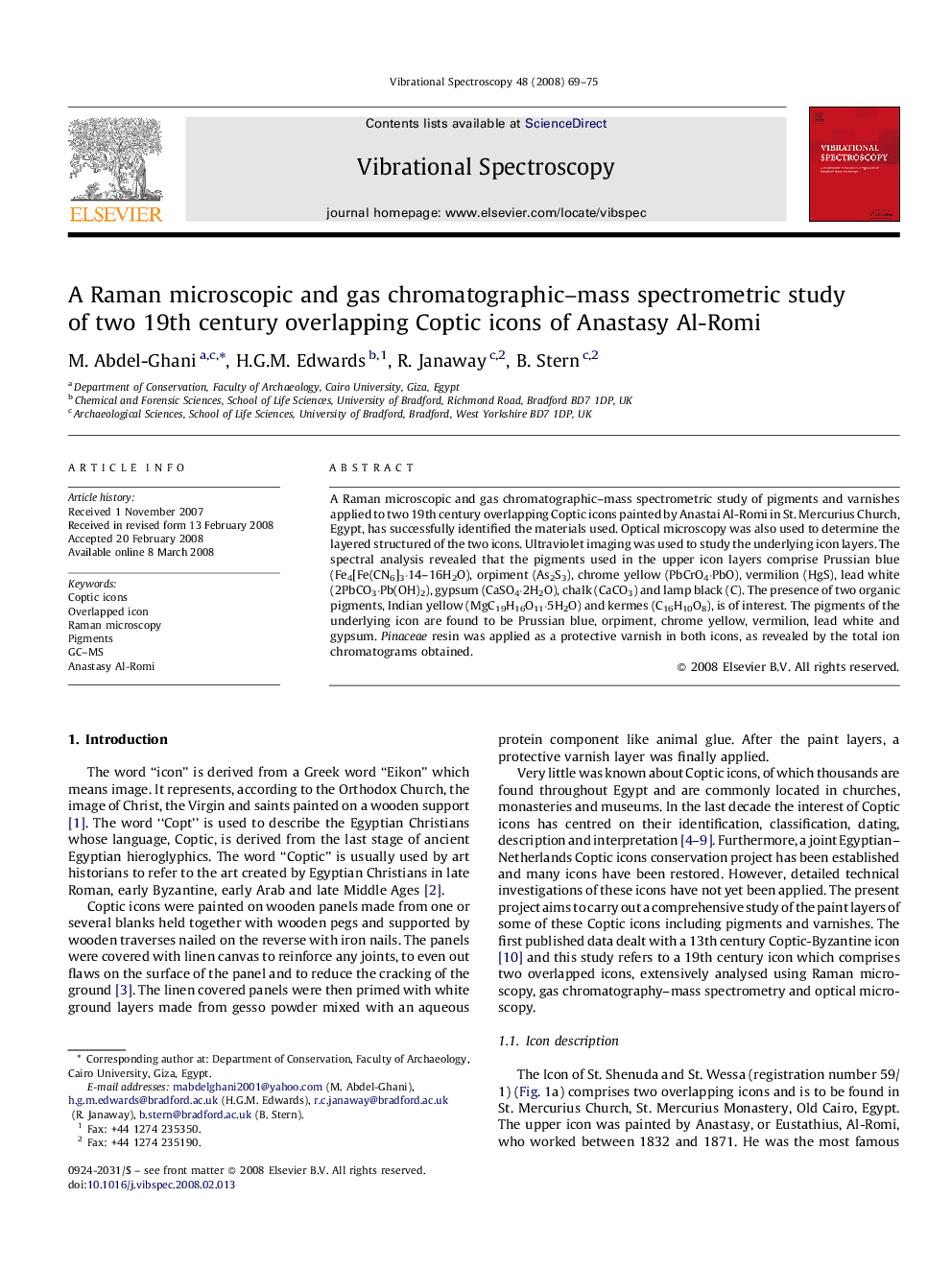| Article ID | Journal | Published Year | Pages | File Type |
|---|---|---|---|---|
| 1249750 | Vibrational Spectroscopy | 2008 | 7 Pages |
A Raman microscopic and gas chromatographic–mass spectrometric study of pigments and varnishes applied to two 19th century overlapping Coptic icons painted by Anastai Al-Romi in St. Mercurius Church, Egypt, has successfully identified the materials used. Optical microscopy was also used to determine the layered structured of the two icons. Ultraviolet imaging was used to study the underlying icon layers. The spectral analysis revealed that the pigments used in the upper icon layers comprise Prussian blue (Fe4[Fe(CN6]3·14–16H2O), orpiment (As2S3), chrome yellow (PbCrO4·PbO), vermilion (HgS), lead white (2PbCO3·Pb(OH)2), gypsum (CaSO4·2H2O), chalk (CaCO3) and lamp black (C). The presence of two organic pigments, Indian yellow (MgC19H16O11·5H2O) and kermes (C16H10O8), is of interest. The pigments of the underlying icon are found to be Prussian blue, orpiment, chrome yellow, vermilion, lead white and gypsum. Pinaceae resin was applied as a protective varnish in both icons, as revealed by the total ion chromatograms obtained.
